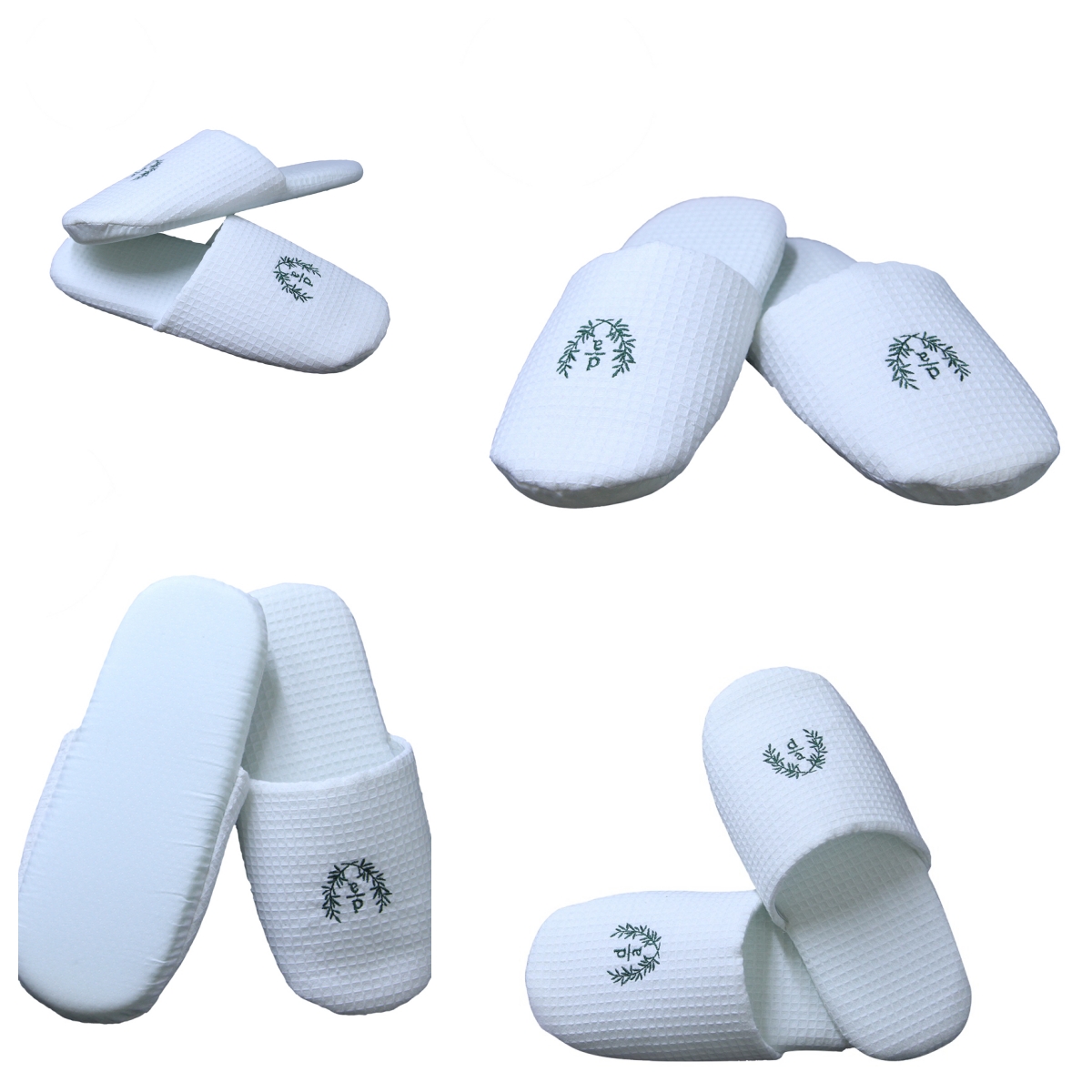
how to better choose hotel slippers
How can hotel buyers purchase hotel slippers with good quality and favorable price? Today, we tell you how to better choose hotel slippers.
You can bring your own toothpaste, shampoo and shower gel. You can also bring small bottles with travel packages. However, few visitors want to bring their own slippers: they get dirty easily, take up space and are not easy to pack and organize.
Therefore, a pair of light, comfortable and clean hotel slippers are very popular with guests. Many hotels also consider slippers as a symbol of the quality of their services, use high quality materials and print their own logos, which invisibly enhance the image of their hotel brand while offering guests a comfortable experience.
As a hotelier, how many do you know about hotel slippers? Tell us the composition of the slippers: sole, cover, toe cover and edge. Take disposable slippers for example. In general, the materials of the foot cover and the cover are similar. Non-woven fabrics and plastic edge strips are used for the edges and EVA materials for the soles.
_%E5%89%AF%E6%9C%AC.png)
1. Hotel slippers cover fabric
The materials that make up slippers cover fabric is generally non-woven fabrics, fleece fabric, genuine fabric, towel fabric, gold velvet, coral velvet, cut velvet, velvet, waffle and other materials. Since it is made of fabric, it can generally be used as a slipper cover.
In general, small hotels and hotels typically use non-woven disposable slippers, mid-range hotels use more velvet, plush, short velvet slippers, and hotels prefer terry, cut pile, waffle, and cotton / linen / sardines cloth slippers.

Sole
At present, the soles used in most hotels are still mainly EVA and other materials include TPR soles, PVC soles, XPE soles, fabric soles, plastic fabric soles etc. The thickness of the sole is usually 4-7 mm. The thicker the sole, the more expensive.
EVA sole: a new type of environmentally friendly plastic foam obtained by copolymerizing ethylene (E) and vinyl acetate (VA), which is mainly divided into flax and raw hemp.
EVA sole: The advantage is that it is relatively powerful, easy to use and easy to clean and the price is relatively cheap. EVA soles can be divided into different thicknesses. In general, budget hotel soles are relatively thin, ranging from 3 mm to 5 mm; will add sponge to the sole of the foot to increase the softness of the sole of the foot and improve non-slip performance.
Disadvantages: easy to absorb water, not easy to corrode, unfavorable to the environment, easy to get dirty.
TPR sole: TPR is a thermoplastic rubber material. The process is divided into soft bottom, hard bottom, side seam bottom, rubber bottom, beef tendon bottom, blower bottom, viscose bottom and so on.
The advantage of TPR material is that it is soft and waterproof.
Disadvantages: heavy material, poor wear (not resistant to wear), poor softness, poor flexibility (no folding resistance), poor shock absorption.
PVC sole: Hard and brittle material with low impact resistance. The advantages are high durability and low price.
Disadvantages: heavy material, poor wear (non-wear resistant), poor non-slip performance, easy to break, poor air permeability and poor shock absorption.
XPE sole:polyethylene foam material with chemically crosslinked bonds, which is environmentally friendly, non-toxic, odorless and resilient compared to other materials. It is often used as baby crawling pads, car mats, etc.
Cloth sole : The soles of hotel slippers are made of fabric, such as canvas, mop jersey, suede and so on. This sole is suitable for wooden floors, it is soft and comfortable to use and it is also easier to clean.
Disadvantages: The big disadvantage is that it is not waterproof and has poor non-slip performance.
Point plastic cloth sole: Point plastic cloth is not very popular in China, because many find it uncomfortable and not waterproof. However, this type of sole has good slip resistance, is soft and light and has a good muting effect. It is commonly used in many hotels and hospitals.
Disadvantages: non-environmentally friendly, non-waterproof.


.png)